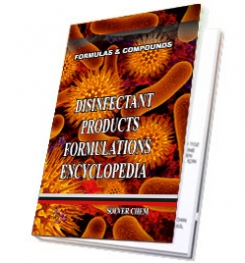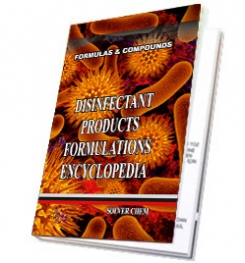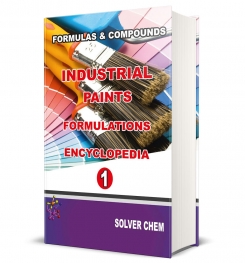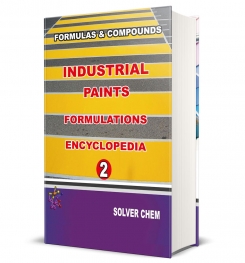Peracetic acid (PAA) was first registered as a disinfectant in 1985 by the EPA. PAA is produced by combining acetic acid (vinegar) and hydrogen peroxide. The result is a peroxide version of acetic acid (vinegar) that has a very distinctive and a pungent vinegary smell. It is a weak acid compared to acetic acid but can be highly corrosive if not used at the appropriate dilutions. Peracetic acid is a versatile chemical that can be used in a variety of applications with its main use as a disinfectant product in food and beverage processing/producing plants due to the fact that it leaves no harmful residues and decomposes into harmless by-products.

As a cleaner, peracetic performs poorly as it lacks detergency properties. As alluded to in previous blogs, you may wonder whether increasing the concentration of this acid would benefit its cleaning. The answer in short is: No. A higher concentration would not increase its cleaning abilities and in fact would lead to an increase in corrosiveness.
As a germicide, peracetic acid shows fairly strong efficacy against a broad spectrum of pathogens. Like many disinfectants, the temperature, pH and concentration all play a significant role in determining the antimicrobial properties. It is bactericidal at 10ppm, fungicidal at 30 ppm and virucidal at 400 ppm in a 5 minute contact time. Furthermore, it is sporicidal at concentrations of 3000 ppm. It is more effective at slightly higher temperatures and its germicidal activity increases at higher pH ranges. Combinations of PAA and hydrogen peroxide further boost the efficacy profile, as this blend can prevent the formation of biofilms on hard surfaces. The method by which PAA attacks pathogens is through the reaction with the cellular walls. This leads to breakdown of cell membranes and cellular death due to cell content leakage. An issue regarding PAA usage is its stability. In the presence of water, it breaks down quickly. This would have a direct affect on the viability of the product over time.
Peracetic acid’s safety profile can also be closely correlated to its concentration. The higher the concentration, the worse the safety profile is. For example, an in use solution of PAA of 5% has relatively low oral toxicity at this dilution. However, respiratory issues, including occupational asthma development associated with PAA have been reported. Further, it can strongly sensitize respiratory organs and cause mucus membrane inflammation. Furthermore it is important to be weary of skin and eye exposure as it can cause irritation. Overall, peracetic acid proper care needs to be taken in its use.
The environmental profile of peracetic acid once again depends on the concentrations encountered. At high concentrations, it can be toxic. However, in use concentrations do not pose major threats to the environment. Furthermore, PAA is a readily decomposable substance and breaks down to products that are not considered harmful to the environment.


HARD BOOK E BOOK
RELATED TAGS: What is peracetic acid, peracetic acid disinfectant formula, formulation,formulas,How to make peracetic acid disinfectant, types of peracetic acid disinfectant, oxygen based disinfectants, oxidizing agent disinfectant making, reciple of disinfectants,what is oxidizing products,where to use peracetic acid, msds of hydrogen peroxide, specification of hydrogen peroxide,oxidizing disinfectant production process, peracetic acid disinfectant production,manufacturing of peracetic acid disinfectant,what is peracetic acid,where to use peracetic acid,formula of peracetic acid,preparation of peracetic acid solution.


PERACETIC ACID DISINFECTANT
AND
PRODUCTION PROCESS
AND
PRODUCTION PROCESS
MANUFACTURING PROCESS OF PERACETIC ACID DISINFECTANT is not very complicated. For the production, there is need usable and tried a formulation, raw materials and mixing tank. For raw materials to be used, quantities to be used and ingredients usage rankings, you should look into this formulation. Therefore, formulation and productıon methods of disinfectant solutions are important. If you have not a good formulation, you cannot make healthy and efficient production of any disinfectant products and derivatives.
DISINFECTANT PRODUCTS FORMULATIONS ENCYCLOPEDIA


HARD BOOK E BOOK
RELATED TAGS: What is peracetic acid, peracetic acid disinfectant formula, formulation,formulas,How to make peracetic acid disinfectant, types of peracetic acid disinfectant, oxygen based disinfectants, oxidizing agent disinfectant making, reciple of disinfectants,what is oxidizing products,where to use peracetic acid, msds of hydrogen peroxide, specification of hydrogen peroxide,oxidizing disinfectant production process, peracetic acid disinfectant production,manufacturing of peracetic acid disinfectant,what is peracetic acid,where to use peracetic acid,formula of peracetic acid,preparation of peracetic acid solution.

|
|

|
|

|
|
